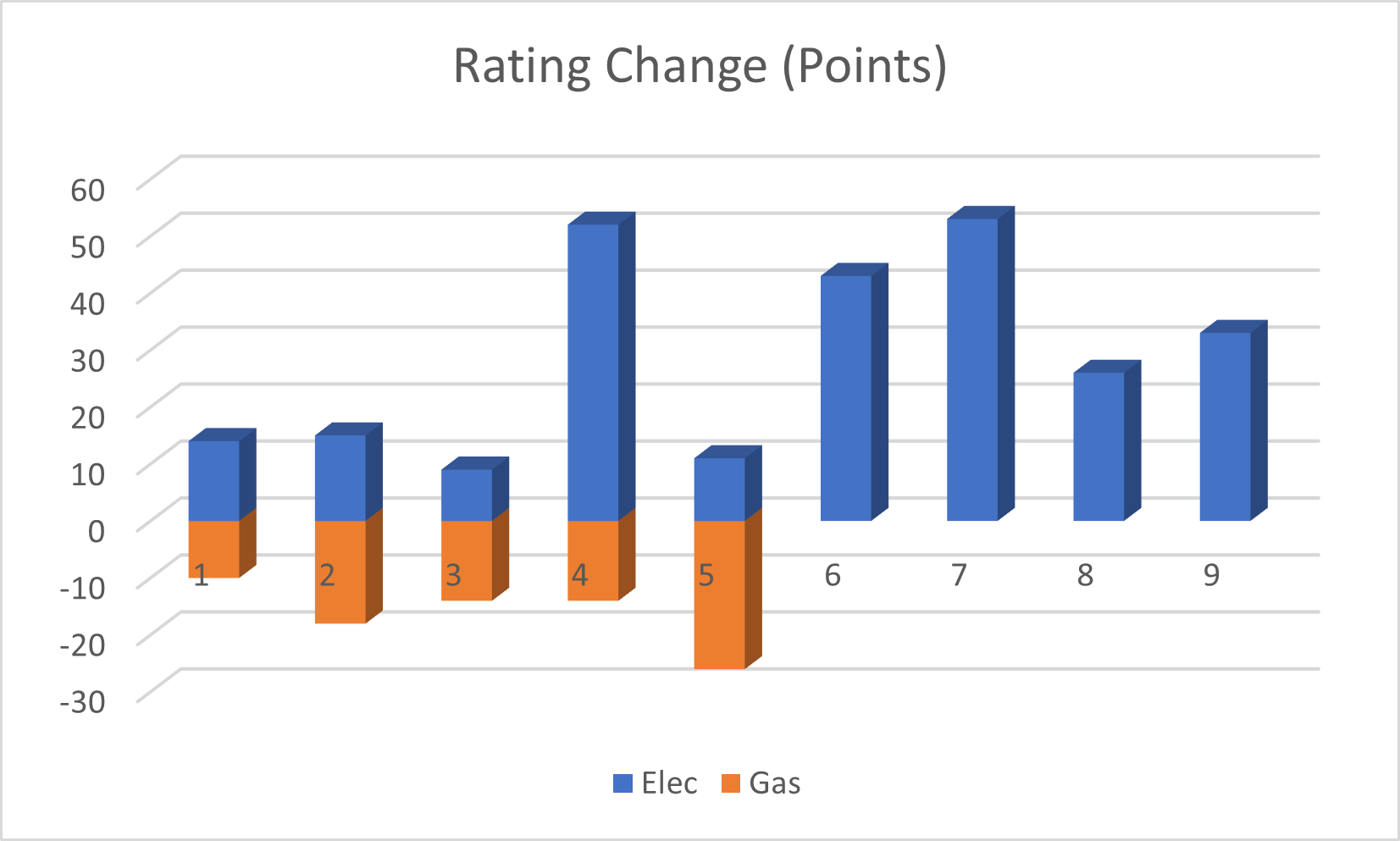15th June 2022 is a significant date for non-domestic energy assessors.

There are going to be two very significant positives for non-domestic energy assessors on June 15th.
1) Because of the updated carbon factors, we should no longer need to be telling the owners of buildings who only use a small amount of heating that they need to install central heating systems. Those who use local electric heaters that they only turn on when they need them, should mostly be able to carry on doing so.
2) After years of pushing for it, DCHI (now Proficiency) have finally got our updated constructions library in SBEM. You will now be able to select things like retro-filled cavity wall. There are options for stone walls - as built, dry-lined or with insulation and many other such logical inclusions. At last, we can select what is actually there in the vast majority of existing buildings. Equally importantly, if something has been upgraded we can now select the upgraded option to reflect it.
However, there is going to be a pretty massive change to the EPC ratings of some buildings. It will happen overnight and we are going to need to explain it to our clients. In the broadest of terms, electricity is now your friend and gas has become the enemy. This is a complete reversal of how they have been treated in SBEM until now. It appears that electricity changes from being (in the region of) twice as bad as gas to slightly better than gas.
This brings the EPC rating into line with reality as grid supplied electricity has been significantly decarbonised. Something Proficiency (and previously DCHI) has long been arguing for. However, there is a downside to such a dramatic change being made so suddenly rather than phased in.
Certain types of building that are not meeting the minimum energy efficiency standard (MEES) using current software, could easily exceed it simply by re-running the EPC in the new software. Other types of building that are currently MEES compliant could now fall below the standard.
The biggest winners are likely to be low grade electrically heated buildings, especially office and workshop type buildings. The biggest losers will probably be low grade gas heated buildings, and again office and workshop type buildings are likely to feature prominently. (We have not yet evaluated the impact on other fuels).
We said some time ago that “Our initial tests indicate that some buildings will potentially jump one, two or even three bands as soon as SBEM 6.1 goes live. We believe this will apply most significantly to electrically heated buildings where heating is the majority of the energy use. The most dramatic rating changes we expect to be low grade office and workshop type buildings. A "G" rated building could become an "E" or even "D" rated building the day SBEM 6.1 goes live. This will happen just by re-running the calculation in the new software”.
Elmhurst have subsequently done some analysis on this, and their findings fully support ours. See the article at https://www.elmhurstenergy.co.uk/non-domestic-epcs-could-jump-from-an-e-to-c-under-new-regulations
To put this into context, across a sample of 14 buildings (9 electrically heated and 5 gas heated) this chart shows the rating change.
The BLUE bars show how much the rating will INCREASE for ELECTRIC heated buildings. The ORANGE bars show how much the rating will DECREASE for GAS heated buildings.
This has pretty significant implications for energy assessors and their clients. It needs to be considered and discussed in the run up to the changeover as the timing of the EPC is critical. We need to be cautious of recommendations pre changeover that would not be needed (or worse still would be recommended against) after changeover.
Looking at specifics, this pair of units are post 2010 construction with no fixed heating (so fanned electric assumed by convention in relevant zones). They have slightly different internal layouts and lighting. 
Updating from SBEM 5.6 to SBEM 6.1, the left hand unit changes from 118 (E) to 85 (D). The right hand unit changes from 99 (D) to 74 (C) which is a pretty dramatic rating change.
The change is even more significant in a lower grade unit. This one is a 1980s build, again with fanned electric heating assumed by convention in the relevant zones. 
The rating changes from a non-MEES compliant 164 (G) to an easily MEES compliant 93 (D).
Obviously, the advice to both clients has to be, delay the EPC until after 15th June if you can. If not, get it reissued after 15th June to take advantage of the higher rating and future-proof against the probable increase in the MEES required rating. There needs to be open discussion of this issue, so assessors are well prepared and clients are suitably informed.
We are also asking accreditation schemes to consider how they are going to approach the lodgement of MEES compliant EPCs in the first few weeks of SBEM 6.1 on buildings that had non-MEES compliant EPCs lodged shortly before the changeover date. We expect to see a high number of these, as well as a high number of surveys done in the period before 15th June with EPCs not lodged until after that date.
Our suggestion is that for a short period of time, perhaps about 3 months, assessors should be able to reissue an EPC that was produced in SBEM v5.6, replacing it with a SBEM 6.1 one without the need to revisit site. This we believe to be an appropriate short term solution to what is hopefully a short term problem.
For Proficiency members there is discussion on this subject, and comparisons members have done, in the non-domestic section of our forum (Click here - member access only)
Ian Sturt
Chaiman, Proficiency
2nd June 2022
Note - The above comparisons are done using the pre-release (BETA) version of DesignBuilder. The images are produced using the DesignBuilder visualisation module in the Energy Assessor Essentials package. Proficiency is pleased to work with DesignBuilder and support DesignBuilder users via our forum. Proficiency members can benefit from discounted rates on DesignBuilder software and training. See more at Discounts and Special Offers (proficiency.services)

